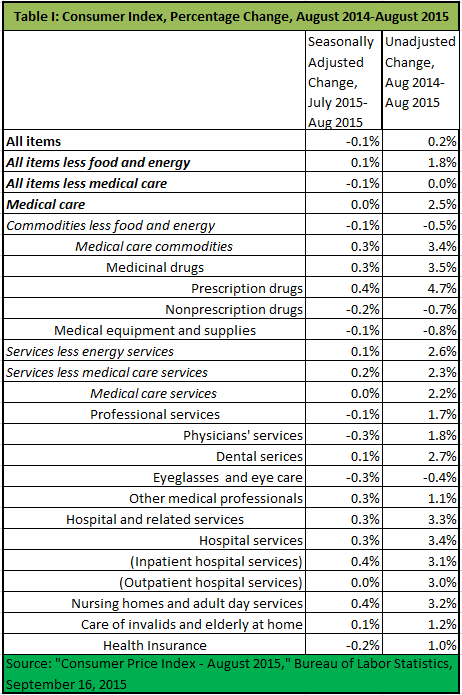Consumer Price Index: Amid Disinflation, Medical Prices Increasing
 Yesterday’s Consumer Price Index (CPI) release confirmed prices of medical goods and services continue to rise at a steady pace, despite the general deflationary environment. The CPI declined 0.1 percent from July to August (seasonally adjusted), and increased just 0.2 percent in the last twelve months.
Yesterday’s Consumer Price Index (CPI) release confirmed prices of medical goods and services continue to rise at a steady pace, despite the general deflationary environment. The CPI declined 0.1 percent from July to August (seasonally adjusted), and increased just 0.2 percent in the last twelve months.
Much of the disinflation is caused by dropping energy prices. Excluding food and energy, the CPI increased 0.1 percent last month and 1.8 percent over the last twelve months. Medical care, although flat last month, increased 2.5 percent over the last twelve months (see Table I). This is moderate by historical standards, but still excessive relative to current CPI.
The items with the highest price increases over the last twelve months are prescription drugs (4.7 percent), hospital services (3.4 percent), and nursing homes and adult day services (3.2 percent). This broadly corroborates what was indicated in the Producer Price Index (PPI).
Medical care comprises just under eight percent of the weight of goods and services in the CPI. This is much less than its share of Gross Domestic Product (GDP, which is a function of both price and quantity) because it only measures prices of health goods and services for which there is out-of-pocket spending. (For more information on how the medical care component of CPI is estimated, see here.)


